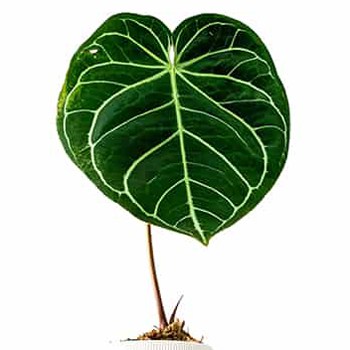I hear you say, “omg, she wrote the entire blog on watering anthurium plants (facepalm emoji).”
Yes, I did!
It surprises me how often budding plant enthusiasts permanently part ways with their anthuriums due to incorrect watering.
This blog has everything I learned about anthurium water requirements, why I don’t use moisture meters, and my take on misting.
Anthuriums are a genus of tropical plants in the Araceae family native to rainforests of Central and South America. The most common in cultivation and widely available anthurium species is Anthurium andraeanum also known as a flamingo flower.
The information in this blog works for all kinds of anthurium plants, but it’ll be especially useful if you’re growing any indoor species that aren’t andreanum. Think velvet leaf anthurium (warocqueanum, regale, crystallinum) or strap leaf anthuriums (vittarifolium, pallidiflorum, or friedrichsthalii).
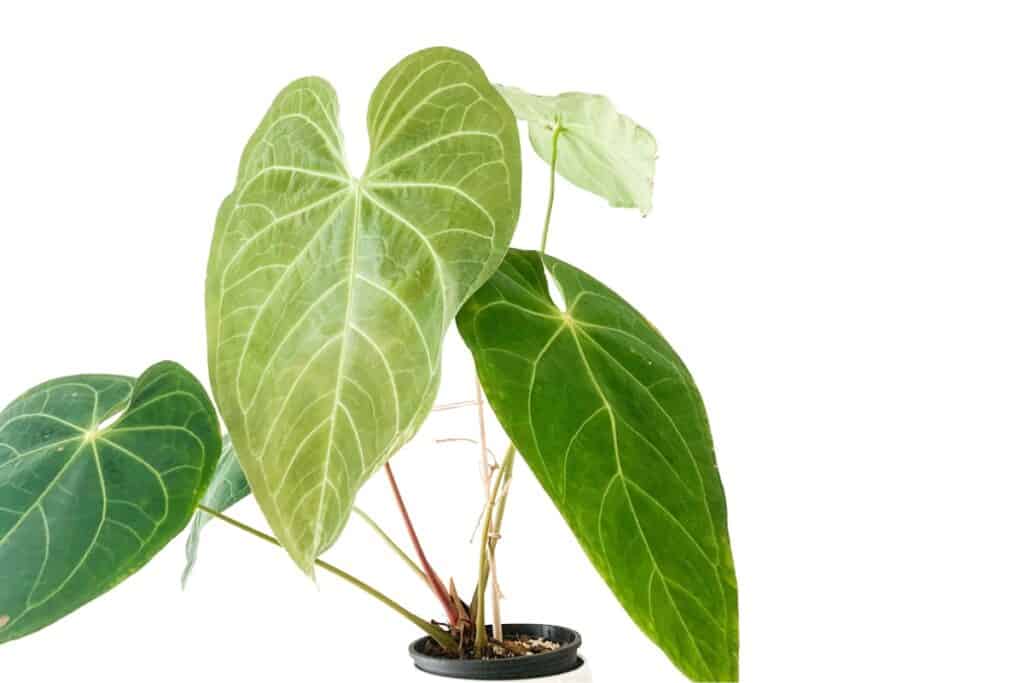
A closer look at the Anthurium roots: The key to perfect watering
To help you understand the anthurium watering requirements, we first need to look closer at the anthurium roots and their function.
Many anthurium species are epiphytic (species that grow on other trees) or hemiepiphytic (species that grow part of their life as an epiphyte), and their fleshy roots play a different role than purely terrestrial species.
Epiphytes’ roots function as anchors to attach themselves to a host tree and to seek and absorb moisture from the air and rainfall. Epiphytic roots are very thick but brittle and can be easily damaged.
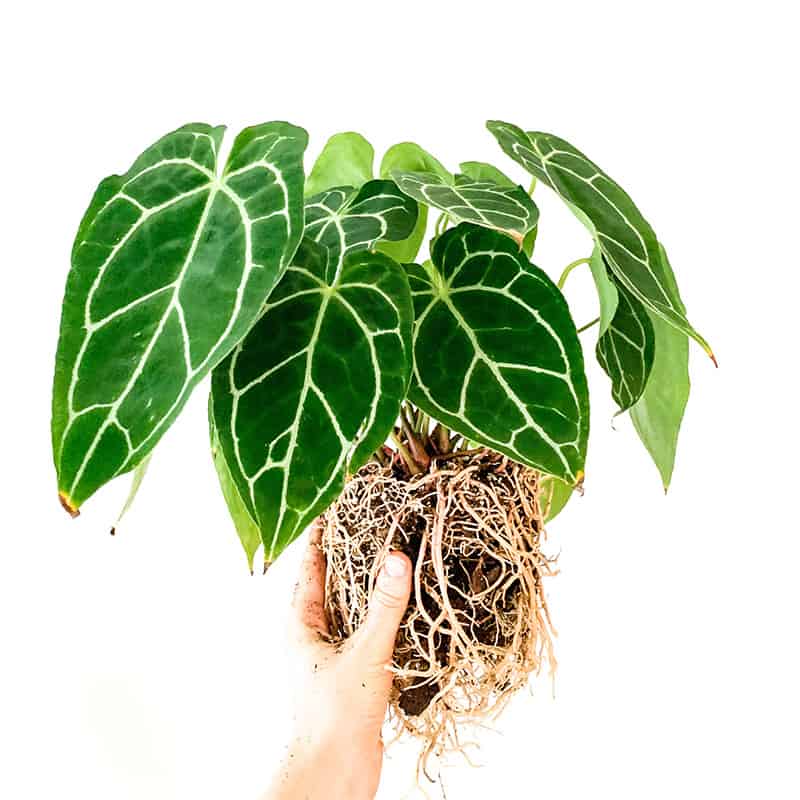
In nature, the water passes through epiphytes and never stays on for a prolonged period of time. Also, humidity is very high and the roots can absorb the water from moisture in the air. As we grow anthuriums in pots with a substrate, it’s important to keep in mind their natural growth environment when determining their care needs.
Overpotting, or putting an anthurium in a pot with too much substrate, can lead to waterlogging and root rot. This occurs because the substrate retains excessive moisture, making it difficult for the root ball to absorb it. Having the right size pot with a substrate that is very airy, and chunky with large pieces the roots can attach themselves to is optimal.
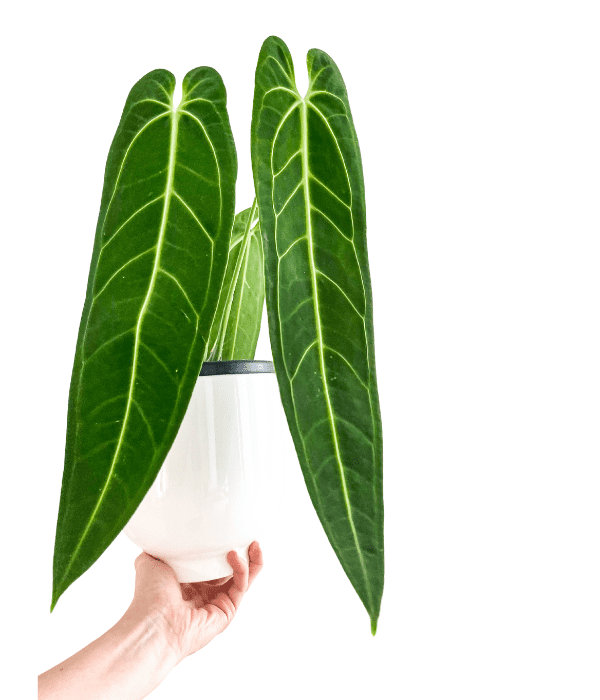
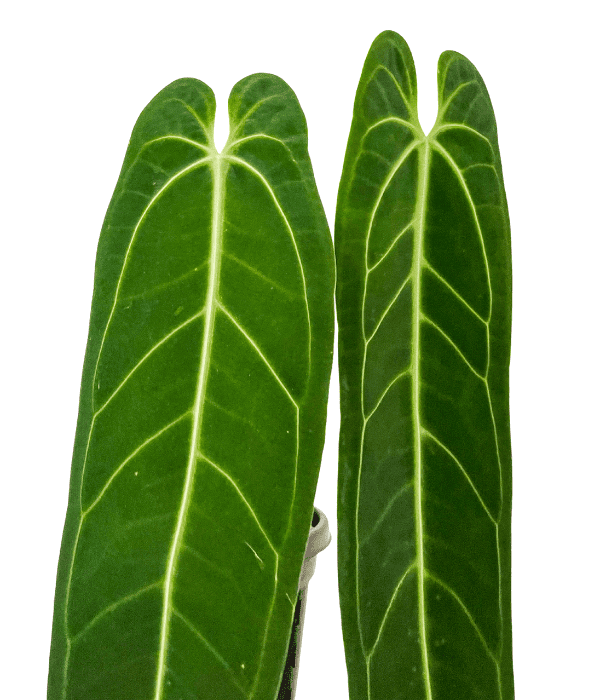
When to water anthuriums
When is the right time to water your anthurium depends on various factors. Here are some aspects to consider when deciding if it’s time to water.
Potting mix (porous or dense)
How porous or dense your potting mix is. Anthuriums like fast-draining, chunky substrate. If your anthurium is in a well-draining substrate, then overwatering will be hardly an issue.
Ensure the container has good drainage holes. Anthuriums don’t grow well in soggy soil. Their epiphytic roots like moisture but don’t like sitting in water. Use aroid or orchid mix (pine bark, perlite, vermiculite, horticultural charcoal) to keep the roots happy.
Size of the container & size of the plant (how many leaves)
The size of the container and the plant it holds will also play a role in determining the watering schedule. The larger the container, the more moisture retentive it will be.
If the plant is large with many leaves to support it and has an appropriate size container (read: roots like it tight!) then it will easily absorb the water. But if the pot is too big for the plant, you’re inviting good conditions for developing root rot at worst and oedema at best.
Environmental conditions
When it rains a lot outside, the increased humidity combined with reduced sunlight can result in the potting mix staying moist for longer periods. In this scenario, you should extend the period between watering sessions.
Even though I grow most of my anthuriums under a grow light, when there is a prolonged period of rain and cloudy outdoors, it takes 1 or 2 days longer for the potting substrate to dry out.
Many of you grow plants indoors in climates with fall and winter. Cut back slightly on watering during periods of cooler temperatures, as the plant’s water usage will slow down.
Where it grows in your home
Does your anthurium plant have ample light, either natural or from a grow light? How much light it receives impacts how fast it photosynthesizes and the leaves transpire. The higher the light exposure, the greater the water needs.
What kind of anthurium do you have – terrestrial or epiphytic
Epiphytic species (think strap leaf anthuriums) can better withhold periods between waterings because, naturally, they are accustomed to drier periods if there is no rainfall and soil to keep their roots moist. This is a minor consideration since it is likely that you will grow both epiphytic and terrestrial anthuriums in a substrate.
You
A lot will depend on you. What is your watering routine? Are you a serial overwaterer or tend to forget about watering? If you tend to do frequent watering, I suggest making the potting mix extra chunky so the excess water can drain fast.
Observe your plant, and you’ll notice the tell-tale signs of it being underwatered or overwatered. You will quickly know how often you need to water anthurium plants.
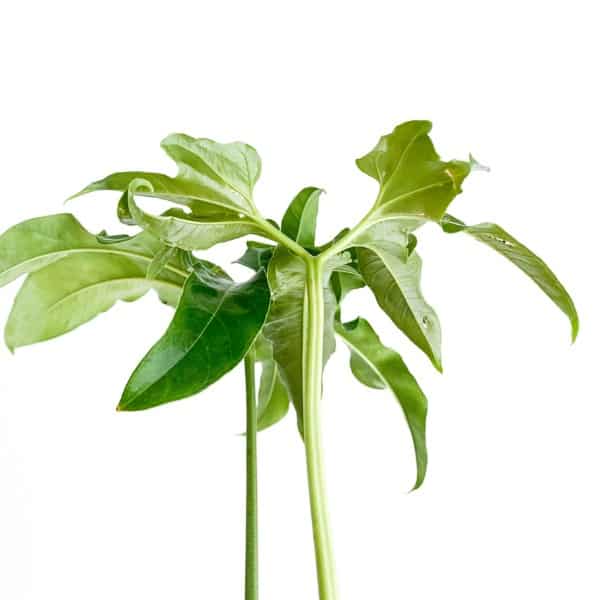
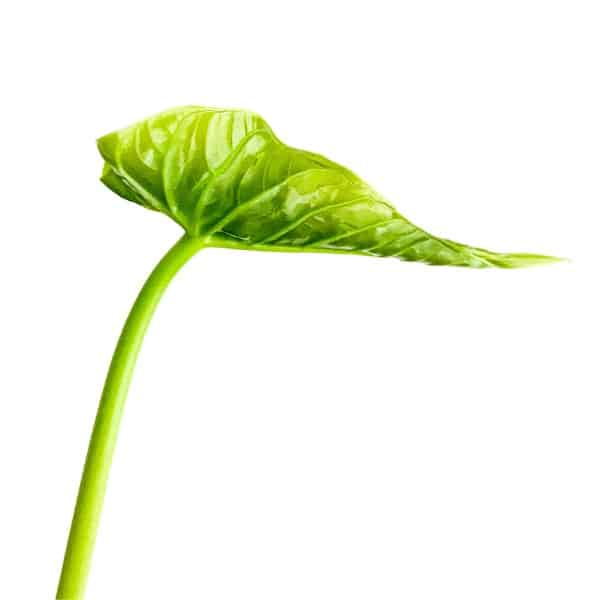
How to tell if your anthurium needs watering
The common signs to look for when deciding whether it is time to water your anthurium plant:
- pot feels light
If the pot feels extra light, you know it’s time to give your anthurium a drink. Plus, if you use a clear plastic pot, you’ll see when the soil is dry.
- drooping or wilting leaves
While drooping or wilting leaves may be just as well a sign of overwatering, if the pot is also light, then you know it is watering time.
- crisping leaf tips
Another sign your plant is chronically underwatered is crisp or brown leaf tips. Increasing your watering schedule and humidity should resolve this issue.
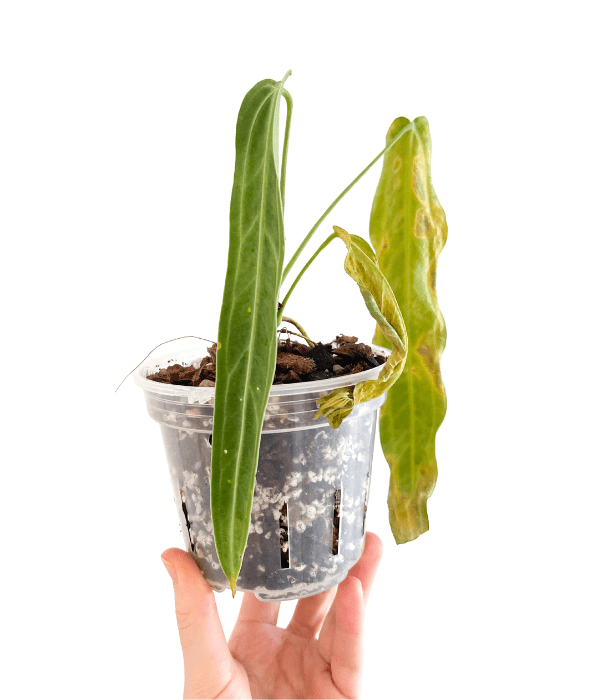
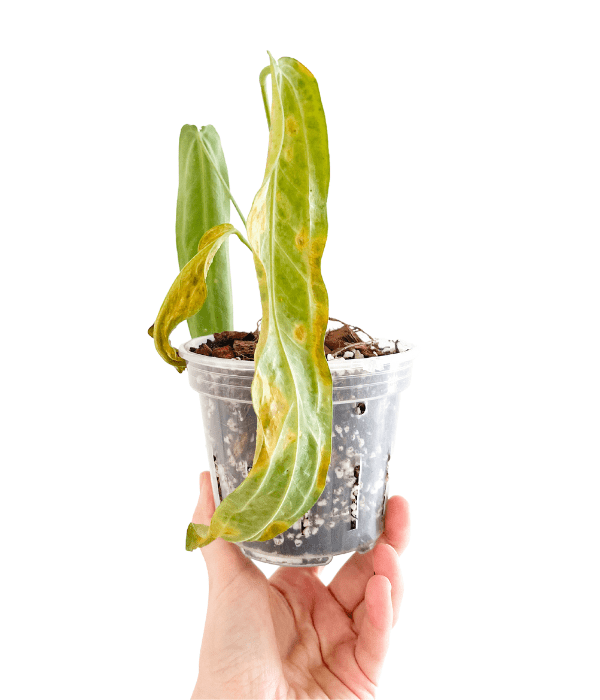
The problem with moisture meters
You might think, ‘hey, I’m just going to use a moisture meter to precisely tell when I should water my plants.’ I hate to burst your bubble, but moisture meters don’t work with chunky substrates. You won’t get an accurate reading. (That’s assuming you are using a coarse potting mix, which by now you should).
Moisture meters work best for seizable containers that are not see-through and where you can’t observe the moisture level in the soil just by looking at it.
A sticking finger test is also not that great. You will detect the topsoil is dry, but what if the substrate at the bottom is still wet? You want to have consistent moisture levels in your soil. That’s why a well-draining soil mix, ideally an aroid-specific mix, will work best.
I’m an ardent advocate of potting anthuriums in clear plastic pots where you can always see the soil moisture level. For aesthetic purposes, you can put your plastic container in stylish cover pots.
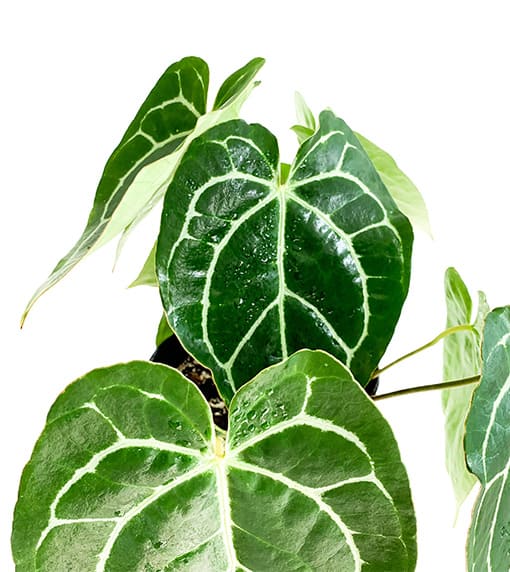
Misting, spraying, or full-on showering?
“Can I spray anthurium leaves or put the plant under a shower?” Yes, you can even with the velvet leaf anthuriums. After all, they get showered with rain all the time in the tropical rainforest. It’s an excellent pest prevention method too.
But, keep these two points of caution:
- What is the tap water quality in your area? Most tropical plants prefer slightly acidic water (ph level around 6). And our tap water is usually more alkaline to make it taste better. Plus, tap water often has traces of chlorine in it. If you’re using tap water to water your plants, let it sit for at least 24hrs to let the chemicals evaporate. Adding horticultural charcoal to your substrate can be helpful in lowering the ph of the mix and filtering out impurities from the water. The best water for plants is rainwater, but few of us have that luxury.
- Give the leaves enough time to dry. It is ideal if you shower your plants in the morning. When moisture stays on leaves for a prolonged period, it can lead to fungal infections. Good airflow, warm temperature, and sufficient light will help evaporate the excess moisture in no time.
Mist or not to mist? Misting is great and very helpful when new leaves emerge. By regularly misting, you can prevent ripping off the very delicate new growth. But misting to raise humidity levels will not make a dent in an open environment. Just get a humidifier.
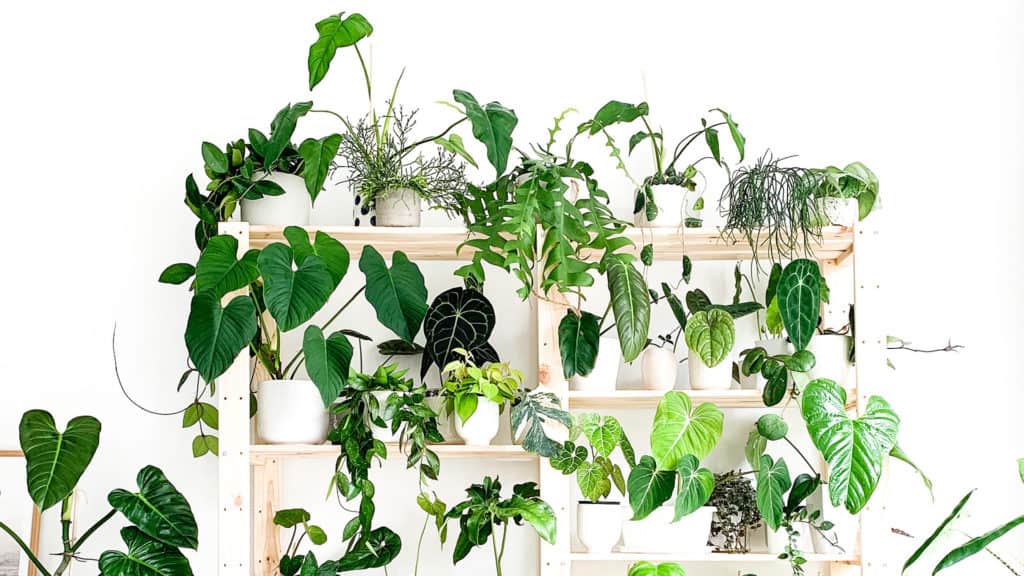
How to water anthuriums
Drench the potting medium thoroughly. A sign of a well-draining mix is when the water exits through drainage holes almost immediately. Saturate the soilless mix but have the excess water drain right away. It is very difficult to overwater a plant with a very well-draining mix.
You can either top or bottom water. My preference is for top watering as I can make sure the potting mix is saturated thoroughly. It also saves time as with bottom watering you have to wait until the soil wicks up the water. I have way too many anthuriums to use the bottom watering method.
In my experience, watering plants in the morning is best as it allows them to absorb the water and transpire the excess during the day. Watering at night can sometimes contribute to oedema.
Have you ever noticed the undersides of leaves develop water-soaked areas after watering? These are signs of oedema, a condition that occurs when the roots absorb water faster than the plant can use it or the leaves transpire.
Scientifically speaking, water pressure builds up in the internal cells of the leaves, causing them to burst. Usually, there is no lasting damage as the plant absorbs the excess moisture or it transpires over time.
But if this happens too frequently, it can produce scarring or permanent damage. To prevent it, don’t let the plant dry out completely, and don’t make the soil waterlogged. Both conditions can impair the roots to function properly.
Water anthuriums in the morning so the sunlight or grow light can help with transpiration.
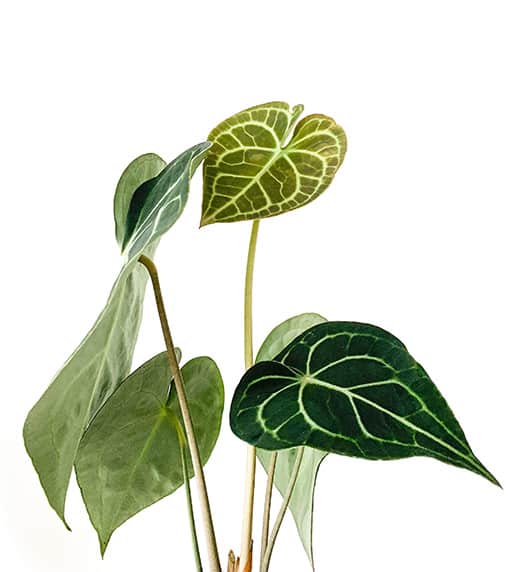
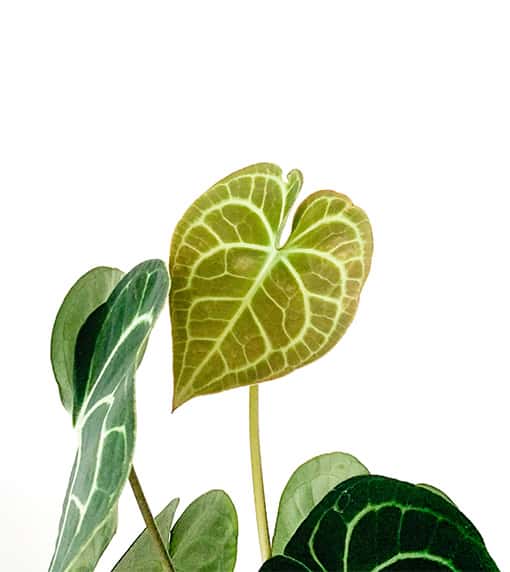
Airflow & humidity plays a significant role here and can speed up or slow down transpiration. Higher airflow speeds up transpiration, while higher humidity slows it down. When growing anthuriums indoors, you are less likely to create an overly humid environment. Unless you’re growing them in greenhouse cabinets or tents where you can control airflow and humidity.
I noticed my Anthurium clarinervium is especially prone to oedema, but I’ve also seen it on my Anthurium forgetii.
Use lukewarm water to water your aroids. I’ve seen people asking whether it’s ok to water anthurium plants with ice cubes. Icy cold water will shock the roots. The only supposed advantage is a slower release of water as the ice melts, but I remain skeptical of its actual benefits.
On the surface, when and how to water anthurium plants seem very straightforward, yet improper watering is a frequent cause of plant demise. I hope the topic of anthurium watering was helpful to you.

